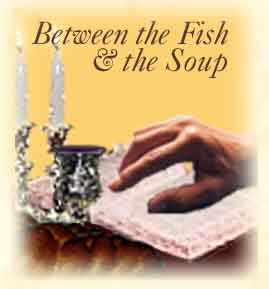

by Jacob Solomon
This week's Parsha | Previous issues | Welcome
- Please Read!
e-mail: jacobsol@netvision.net.il
| G-d
spoke to Moses… Count (lit. lift up the heads) of the entire assembly of the
Israelites… by the number of names… you and Aaron shall count them…
(1:1-3).
This is the second time that Moses counted the Israelites. The first occasion was several months previously – when he counted them after the Sin of the Golden Calf, through the silver half shekels, which were subsequently processed for structures in the Tabernacle. Why was it necessary to count the Israelites a second time at all? There had not been a disaster that reduced the number of people since the first headcount. Also, why was the second census carried out in a different way? The first time the Israelites were counted as one large unit. This time, they were counted by name, according to tribe. A possible approach may be the following. The Israelites had matured as a nation, and it was now time to direct them to develop as tribes and individuals. This is explained below. Looking at the details of how the census was carried out on this occasion shows the following:
At the time of the Giving of the Torah, the Israelites were as one people – ‘as one man with one heart’ (see Rashi to Ex. 19:2). Unity was necessary to bring the Divine Presence to the Israelites – which came through the Revelation at Mount Sinai. But however much unity in thought and purpose was desirable at that moment, it was not a long-term ideal. Now that the Divine Presence was established through the Tabernacle, the Israelites had to develop their G-d given gifts – their personal and tribal individuality. When G-d commanded Moses to take the census this time, he was told to raise the Israelites. This meant that the purpose of the census was not just to record the number of people, but also to spiritually develop those very people through the process of counting them. He was told to do this by recognizing the individuality of each person – by the number of names; and the diverse, distinct characteristics of each tribe – according to the tribes…according to the flags. This was the next opportunity for the spiritual development of the Israelites – to grow within the Torah framework by developing their individual strengths, and not just emulate a single model. In short this was a step to develop the inherent pluralism in the Torah Nation: towards the ideal of each Israelite to fulfill ‘Know Him in all Your ways…’ (Prov. 3:6). This is the work of the sons of Kehat… when the camp is to journey… they shall place on it (the Ark of the Testimony) a tachash-hide covering, and spread a cloth of techeilet (turquoise colored) wool over it... (4:3,5).The text describes how the Taberncale was to be dismantled and packed each time the Israelites prepared to journey in the desert towards the Promised Land. The Ramban explains that only the Ark had techeilet on top of the tachash. This was to symbolize its unique holiness – it was spiritually the center point of the Kodesh Ha-Kadashim – the holiest part of the sanctuary. The Talmud (Chullin 89a) states that techeilet symbolizes faith in G-d, for its blue cover makes people think of Heaven, the place of G-d’s Throne of Glory. Why, therefore, is so much emphasis placed on how the Ark and the Holy Vessels were covered? And why was it so important that no-one should be allowed to see those items when they were being packed? Consider the idea that the Torah legislates for people as they are – with their spiritual frailties – as explained below. The High Priest entered the Kodesh Hakadashim once a year on Yom Kippur. Apart from the Ark, the actual sanctuary was bare. Aaron, and his son Elazar were on a very high spiritual level. On that one occasion during the year that they entered the Kodesh Hakadashim, they related absolutely and entirely to the holiness within. The bringing of the frankincense inside the innermost sanctuary was an experience which brought him (and through him, the Israelites) close to the Almighty. However, others on a lower spiritual plane might relate to the dismantling of the Kodesh Hakadshim in a less positive way. Instead of seeing it as the structure where the Divine Presence was at its most intense and intimate, it would be just parts of a bare room. This would diminish the respect that the Israelites would have had for the Kedushat Kodesh Ha-kadashim, and ultimately, the Almighty Himself who ‘lived there’ (Ex. 25:8). Therefore the Kodesh Hakadashim was the only part of the Tabernacle covered in the techeilet: to emphasize to the people that its great holiness remained intact even when carried after being dismantled. e-mail: jacobsol@netvision.net.il This article is provided as part of Shema Yisrael Torah Network For information on subscriptions, archives, and http://www.shemayisrael.co.il Jerusalem, Israel 972-2-641-8801 |